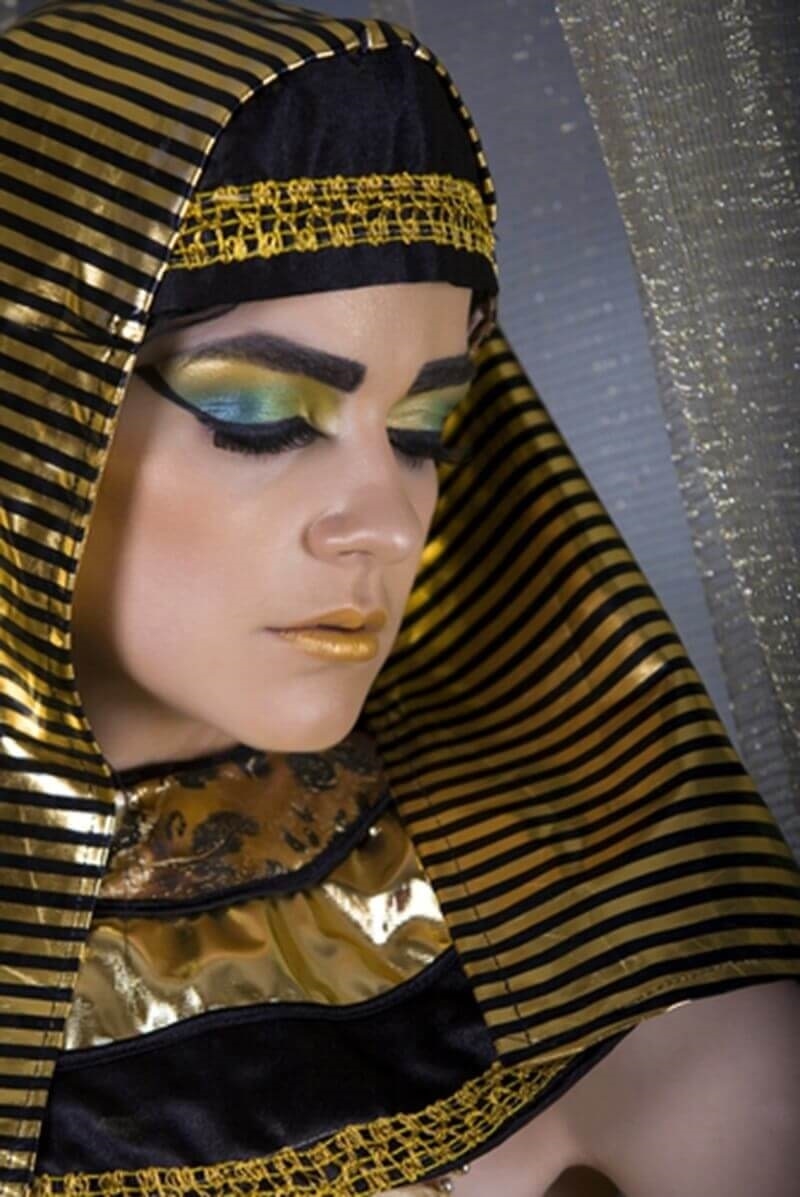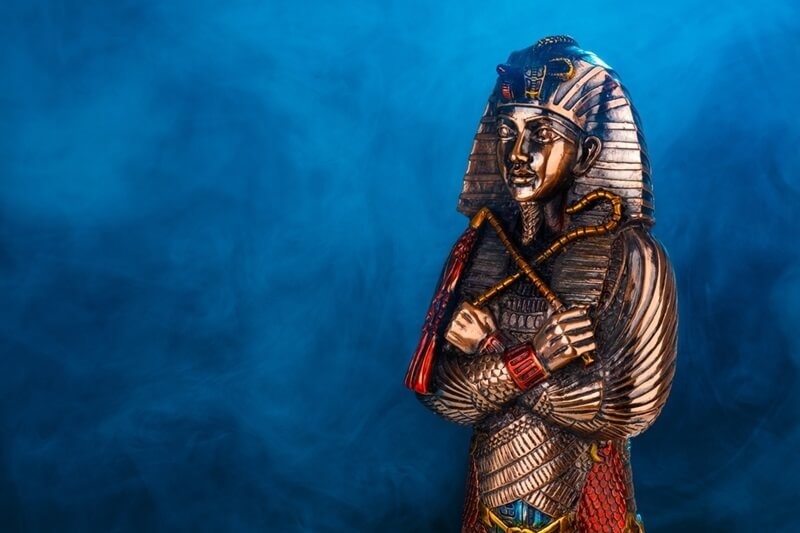
Royal court and active forms of entertainment have been significant parts of Ancient Egyptian culture, including their clothing and wigs. Egyptian ornate wigs were not only mere tools for protecting the head and other parts of the body; they acted as status symbols and represented the owner's power and wealth.
They were worn on the heads of pharaohs, queens, and those of high class, showing the social status of the owners. The hair pieces that the royals of Ancient Egypt wore were both for beauty and authority, and they were intermediaries that made a person look like a royal by enforcing the royal aesthetic.
However, this blog publishes more detailed articles, whereby we will look at the history of when these elaborate wigs were a fashion icon within Egypt as a symbol of royal dignity. From their use in ceremonies to their importance in Egyptian royal costume, it is interesting to delve into the history of wigs.
They say that hair is hair, but in ancient Egyptian society, hair was much more than a simple attribute. This was deemed to portray one’s identity or social reputation. In royalty, hair was viewed as a symbol of divinity and authority. Royal hair was arranged to create an impression of the wearers as close to gods as possible.
Indeed, even the ancient Egyptian pharaohs, queens, and nobility took their hairstyles as seriously as modern men and women today, aspiring to impress with the period's clothes. Since Egypt was very hot then, including women who cut their hair short, the upper-class people shaved their heads.
This practice provided comfort, and the subsequent layered surface on which the wigs were placed when worn became necessary in Egyptian society. The wig was considered a wardrobe staple. As wigs grew more fashionable and functional, they became complex and elaborate works of art that symbolized royal authority and beauty.
Egyptian ornate wigs originated as mere headgear made from plant fiber or hair. They gradually developed into elaborate works of art, customarily designed and decorated with gold, beads, and precious stones.
These wigs were worn more by the royal family, priests, and the highly placed in society, and thus, they assumed meanings of power, prosperity, and stature. During the New Kingdom (1550-1070 BC), wigs became integral to royal wear for both sexes. Only these two were built using human hair or a combination of plant fibers, depending on the wearer's wealth status.
Several Egyptian ornate wigs were straight, buoyant, designed, and enhanced with beads and other colorful ornaments. These wigs could be fancy, symbolizing the wearer's wealth or influence.

Symbolically, in Ancient Egypt, the king’s hair represented power and beauty because it was ascribed to a divine status. The wearer got on well with these wigs not only because they were fashionable but also because, as the representative incarnations of gods on earth, they had to do it for spiritual reasons.
The royal hair could be best described as the emblem of supernatural might and other-worldly dominion. The wigs of Egyptian royalties were, in many cases, studded symbols of the gods, which included illustrations of cobras, falcons, and other creatures.
Moreover, hair pieces were part of many ceremonies among the Egyptian royalty. The pharaohs and queens wore these wigs during religious and other events that signified their divinity. It was not just symbolic; they made regal hair part of these rites, thus blurring the line between a person’s belongings and religious artifacts.
Some headdresses Egyptians wore were incredible; hair accessories were used and integrated into the royal wigs to achieve this magnificent look. Apart from the wigs, many things were added to make the hairstyle flashy and dramatic.
These included wearing regalia such as attractive crowns, fillets, and diadems, all of which bore symbols of a superior rank. To further demonstrate the royal family's richness, such tapes, threads of gold and silver, semi-precious stones, and beads of various colors and sizes were incorporated into wigs.
The accessories not only provided beauty and elegance but also performed functions such as keeping the wigs in place, fresh, and neat through the days of public appearances. These royal hair accessories paved the way for trends that prevailed throughout ancient Egyptian civilization and constituted a vivid part of Egyptian heritage.
Egyptian royal hairstyles were significantly beyond Egypt’s borders due to culture. The rich Egyptian hairstyles, like the ornate wigs, echoed the fashion around the Mediterranean region. There was no exception for other civilizations: they borrowed the Egyptian outlook in hairpieces and even fashion tendencies.
The importance of Egyptian royal wigs was seen in other ancient arts, depicting Egyptian-inspired clothes as a standard. Indeed, several of the fancy hairstyles depicted in ancient times were, in fact, Egyptian.
Through the elaborated wigs and hai do, the forgotten features of the Roman Imperial courts, as well as the dressing code of the Greek aristocracy, could be described. Egyptian royal wigs were adopted as the latter and imitations of beauty and supremacy since royalty and high society from neighboring territories considered Egyptian royalty the epitome of it.
While elaborate wigs were designed for symbolic purposes, they also served a rather practical purpose. Due to Egypt's harsh, primarily hot weather, wearing natural hair has become almost inconceivable.
Baldness was particularly fashionable among the nobility because it kept the wearer cool and hygienic. Wigs made from human hair and plant fiber provide comfort and an aesthetic look.
To the Egyptian royals, wearing wigs was not a mere necessity of the head or a figure of beauty but a necessity. The wigs also aided in nurturing the untamed ‘look ‘of polished hair that enhanced the dignity possessed by the wearer. The headpieces also shielded the royal scalp from the sun so the wearer could keep its appearance neat without much concern all day.
This type of headdress is progressively abandoned by the end of the New Kingdom in Egypt. However, the tradition of royal hair inserts continued in one way or another, and even now, people actively use some of them.
The nature of wigs differed according to the trends of different eras. However, they always had an indisputable cultural connotation. For centuries, Egyptian royal wigs not only set trends in today’s fashion but also are emblematic of the devotion of the ancient Egyptian culture to beauty and the divine right to power.
The history of Egyptian ornate wigs shows how fashion interacted with ethnology in earlier epochs. These were not mere ornaments—these were status icons; they were symbols of a people and their politics. Modern fashion and art are not spared from the impact of ancient Egyptian royalty; we have some indications of such royalty in the hair industry today.
The splendid headwear of the Egyptian nobility was not merely artistic additions to their images. It was essential to medieval clothing and associated with royalty, the concept of divine royalty, and personal authority.
The principles expressed in ornate wigs are the styling of royal hair, accessories, and, to some extent, the use of wigs, which studies the Egyptian fashion system to the present day.
As we explore Ancient Egypt and its history further, we see the royal wigs as symbols of beauty and power and their relation to deities.
This content was created by AI